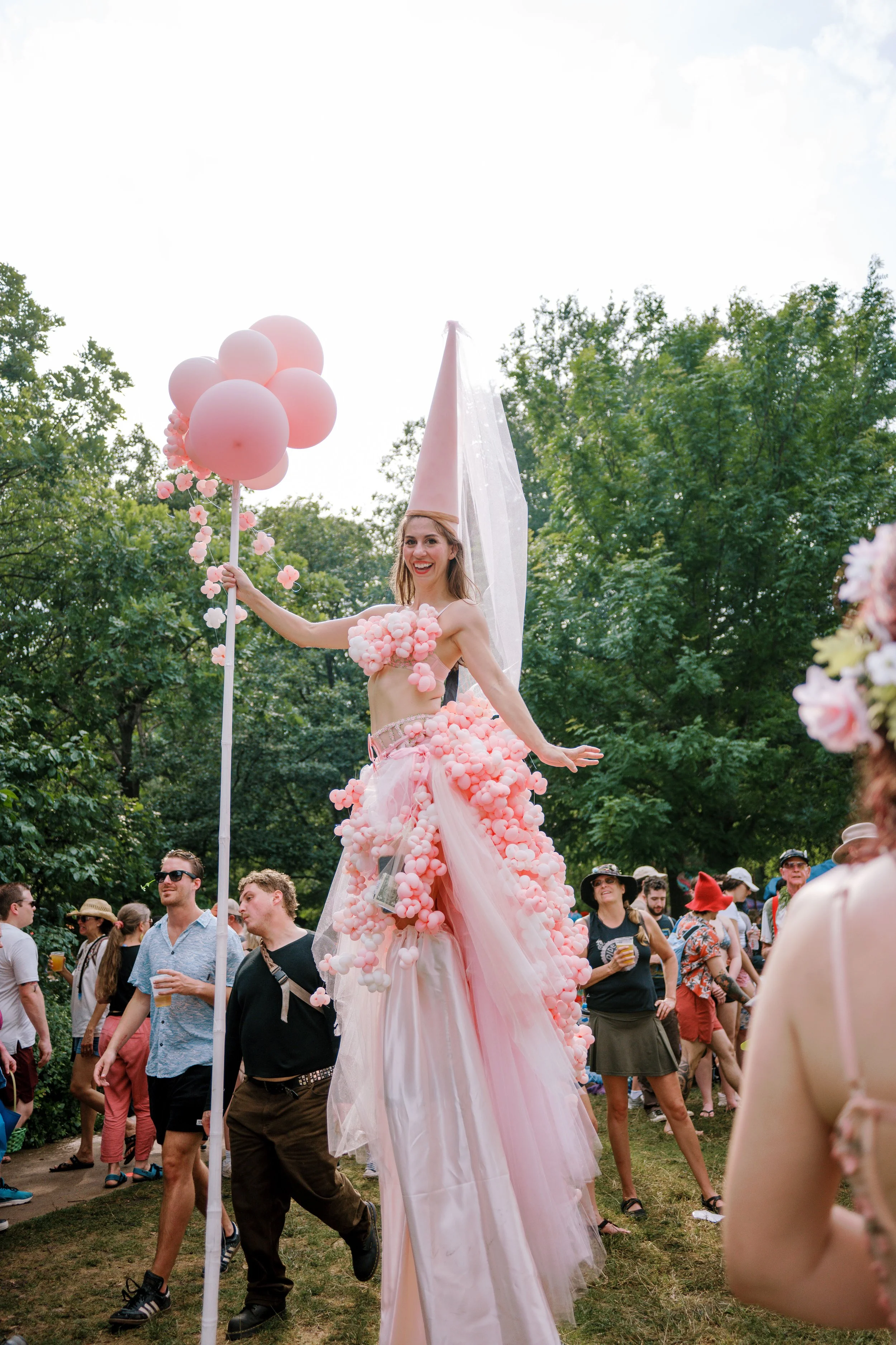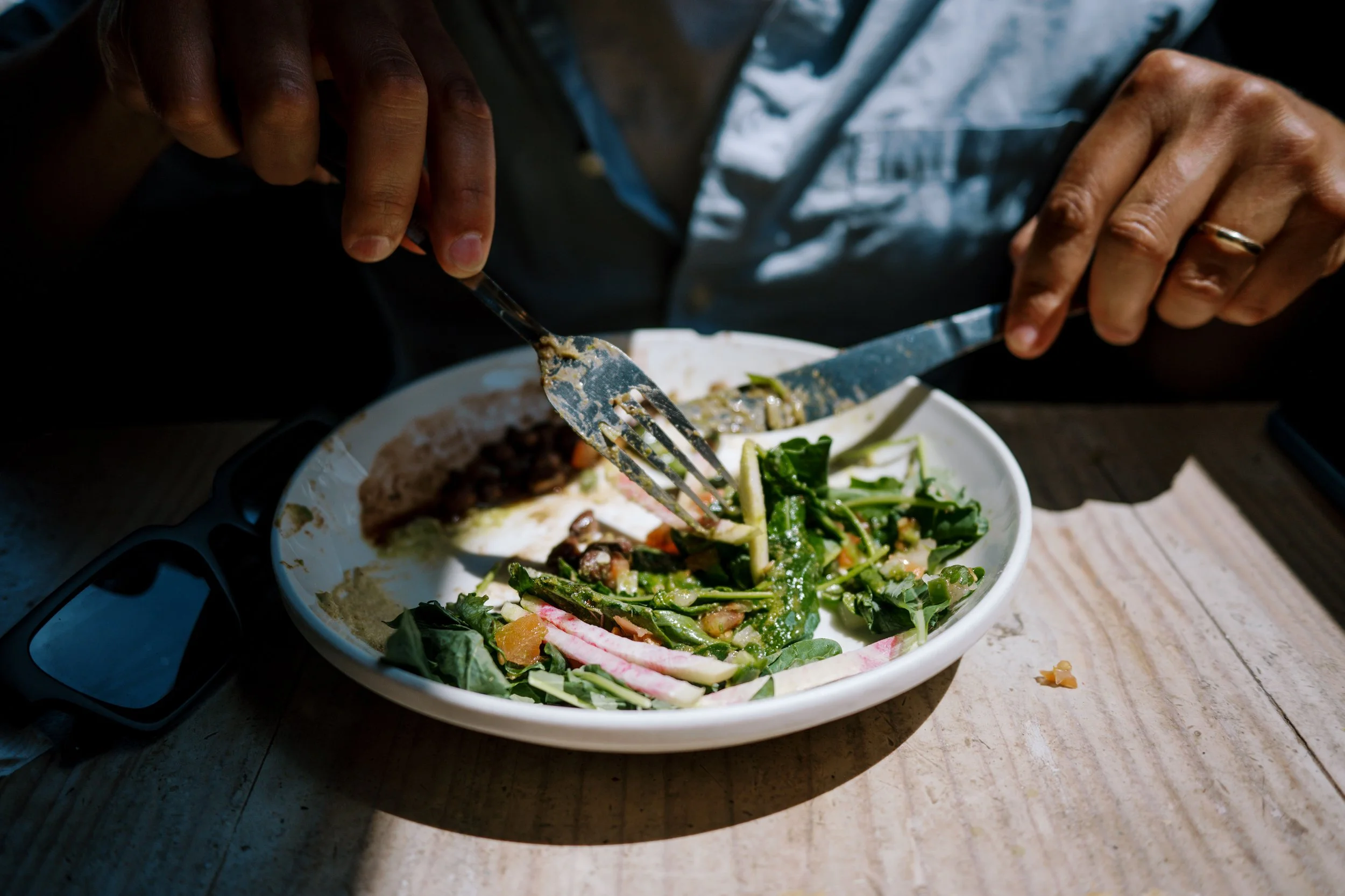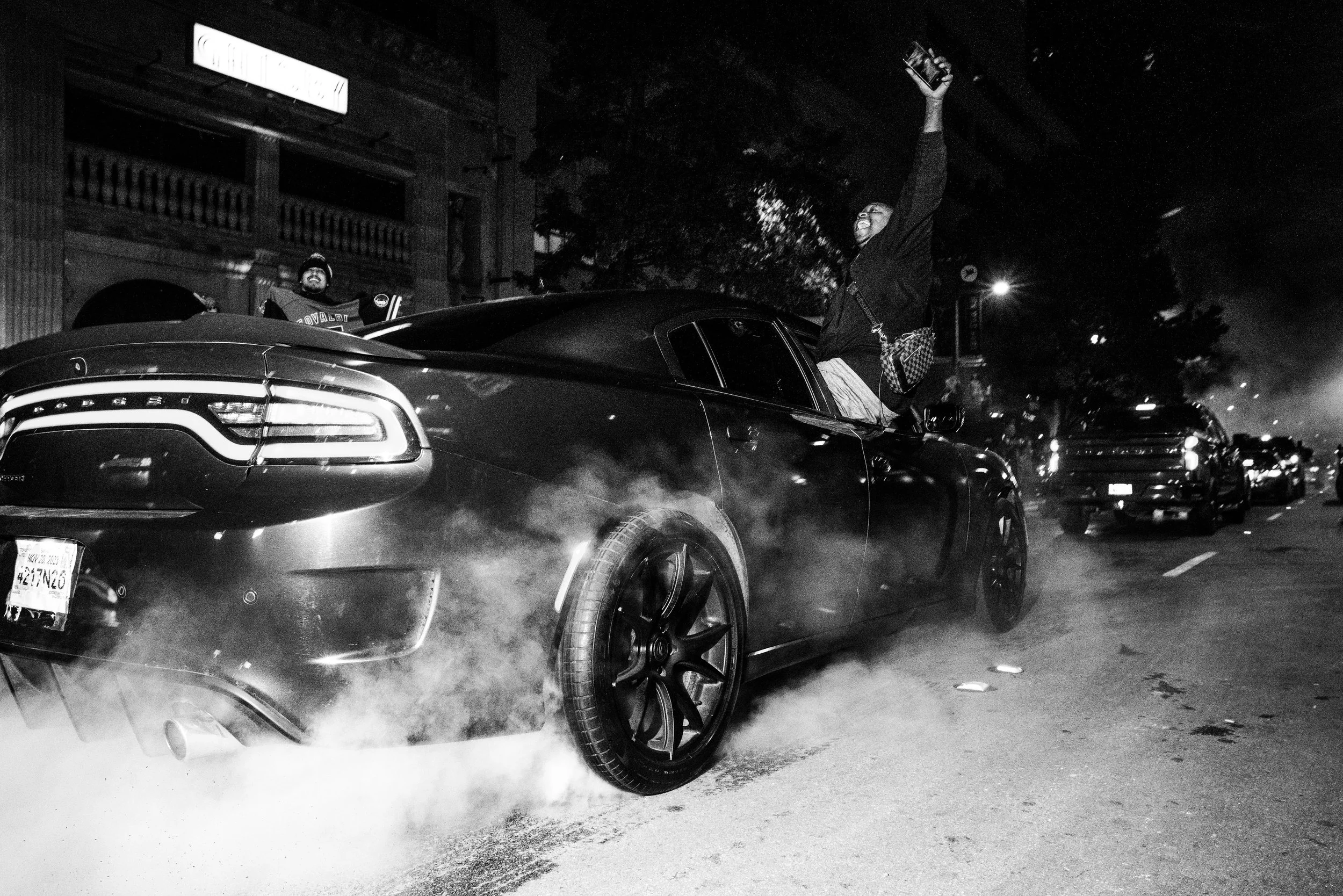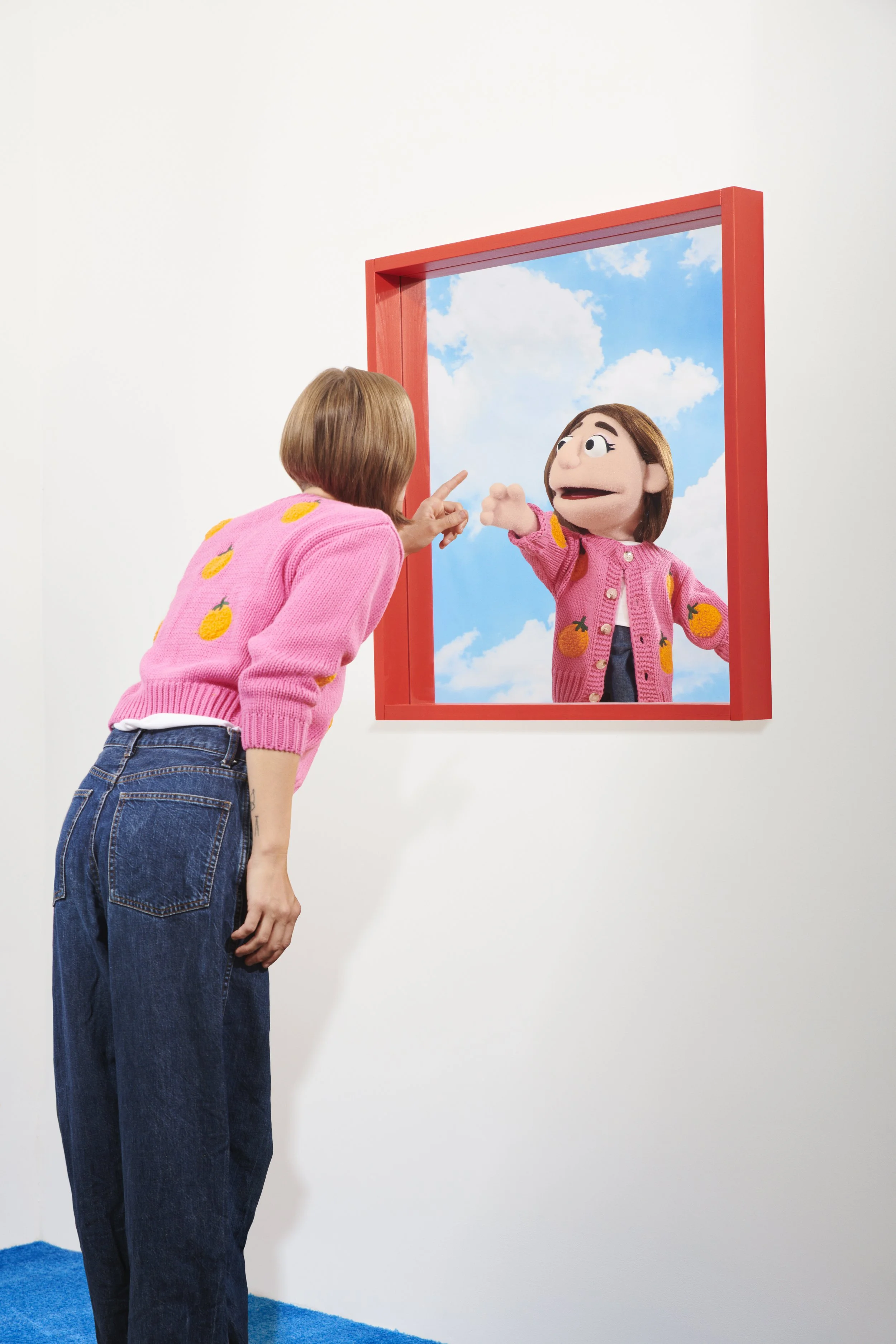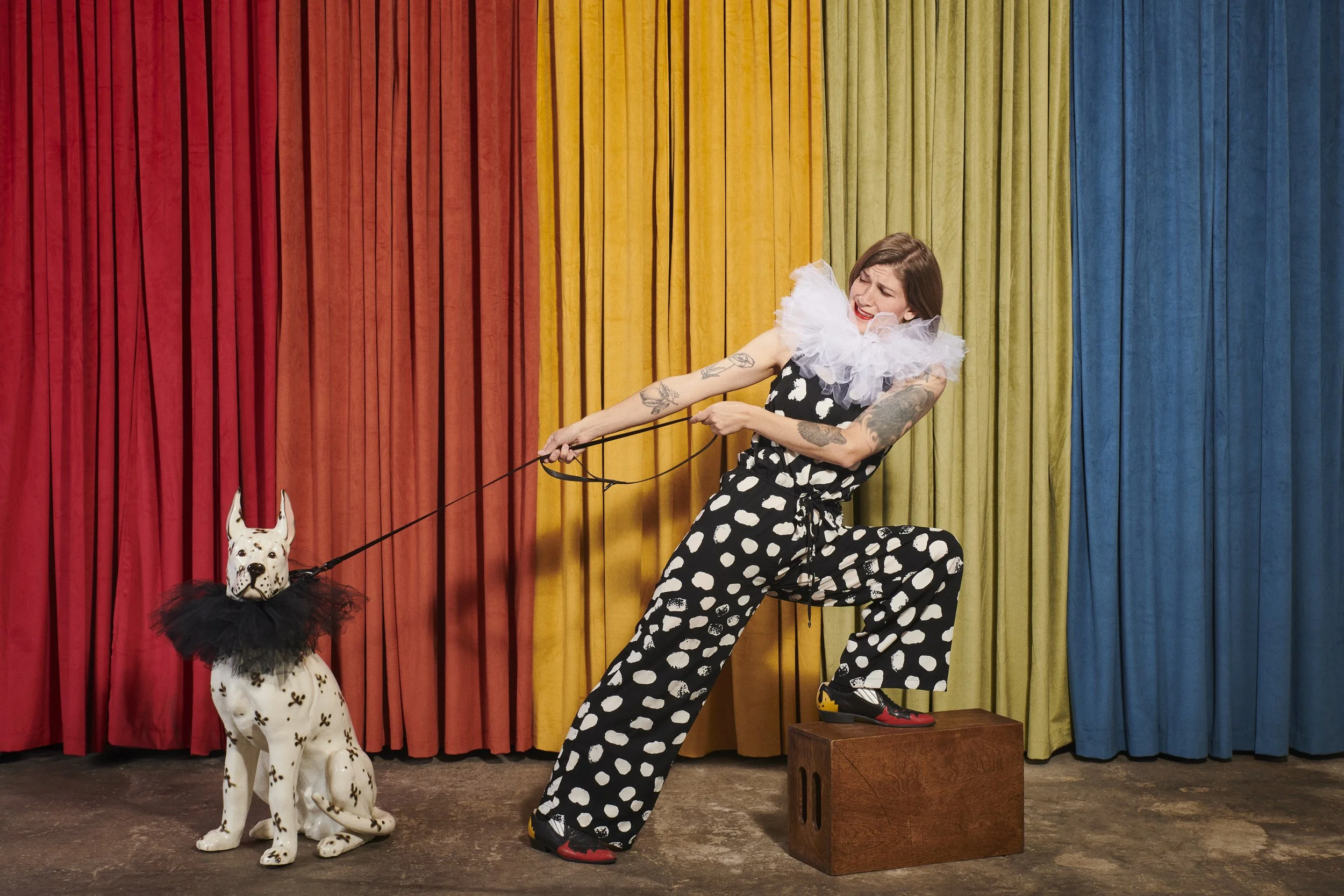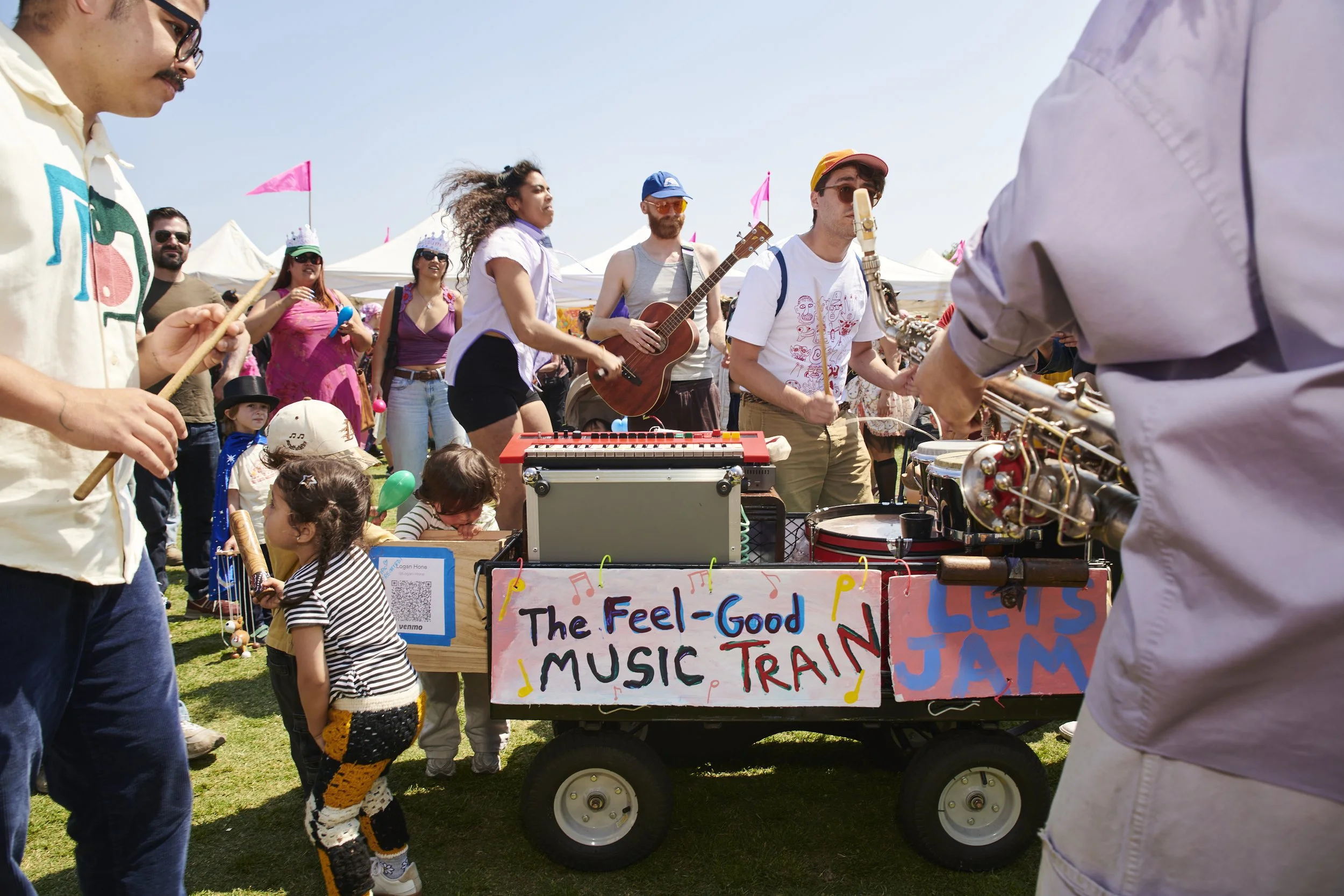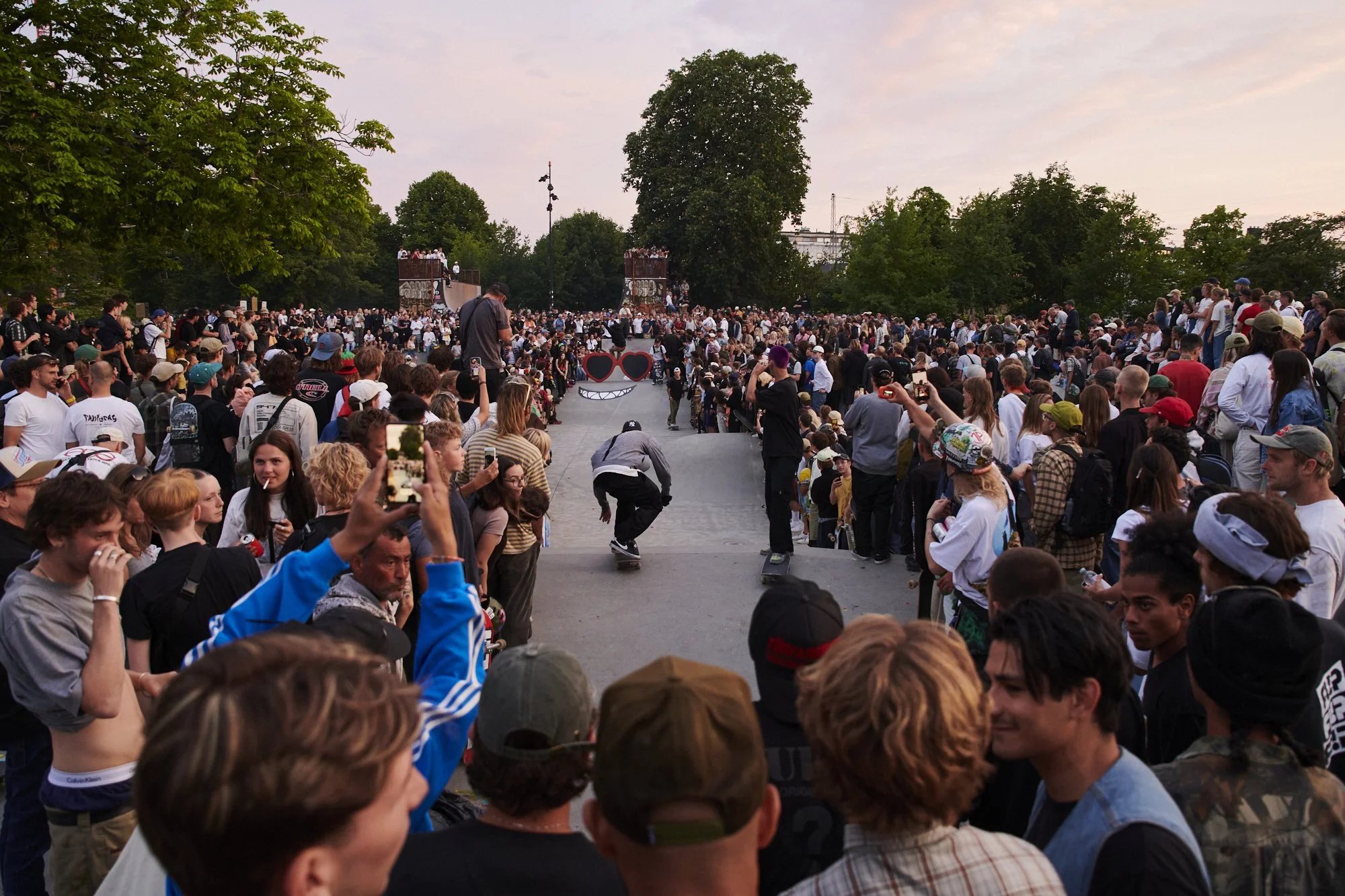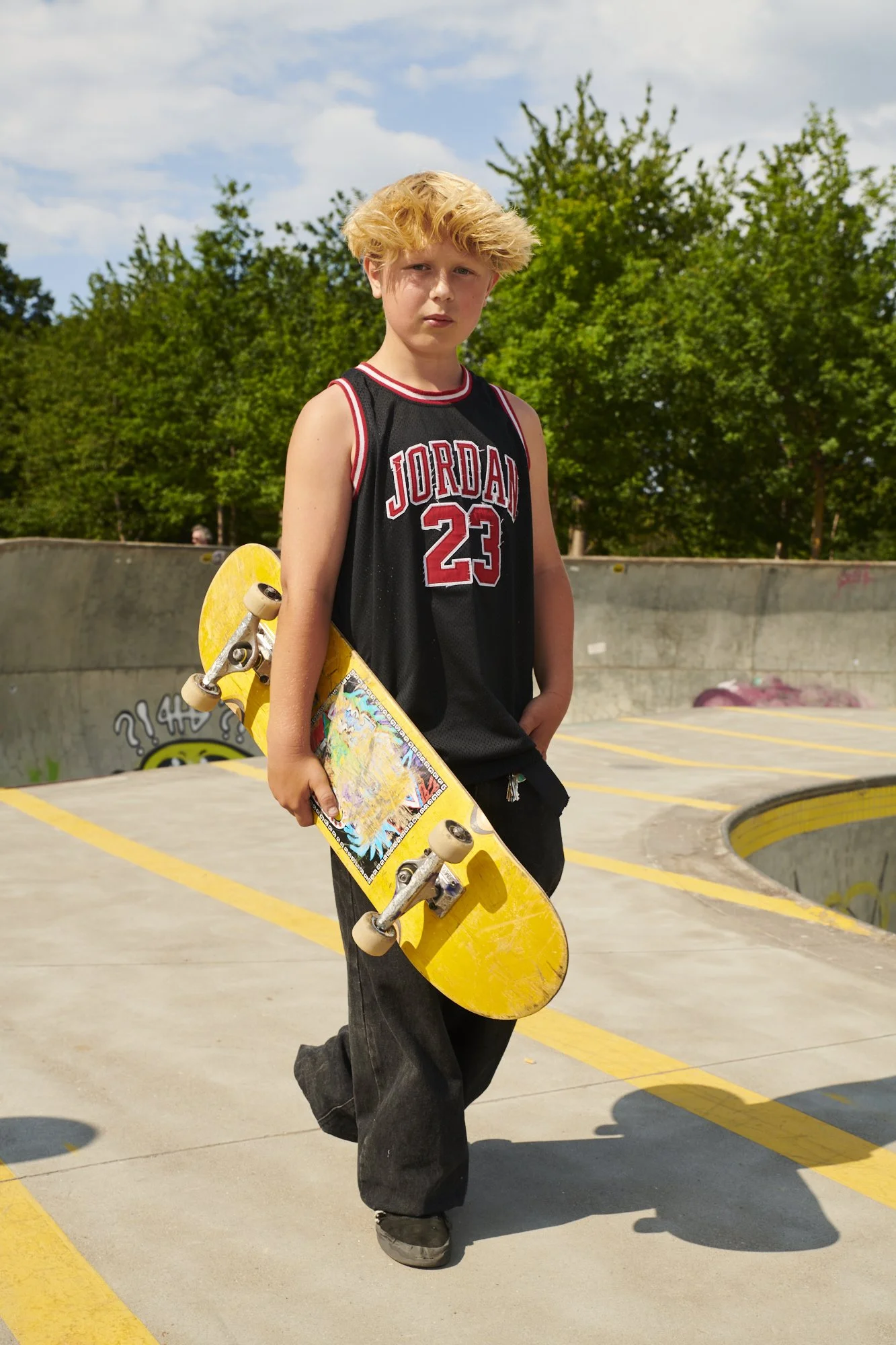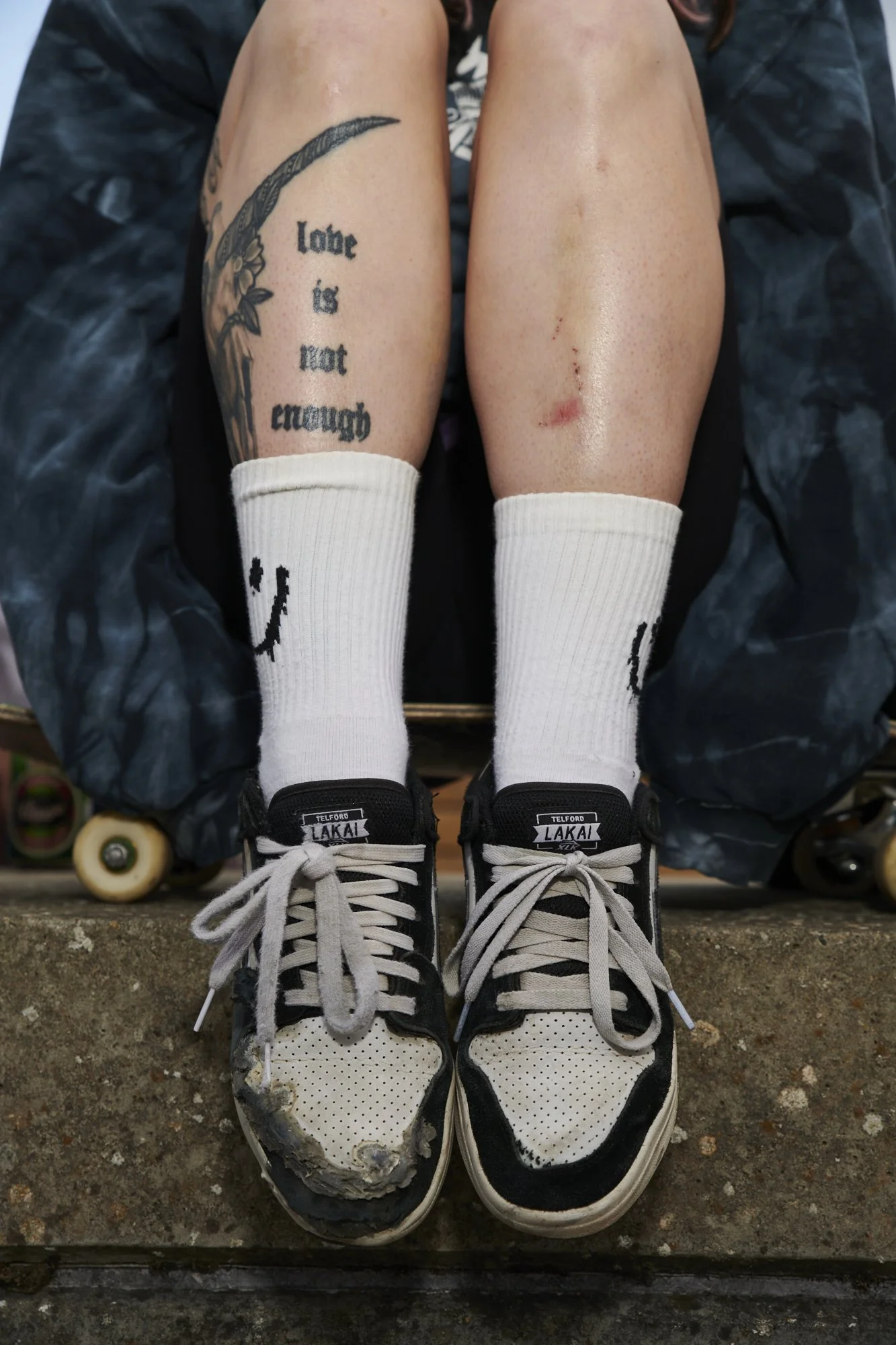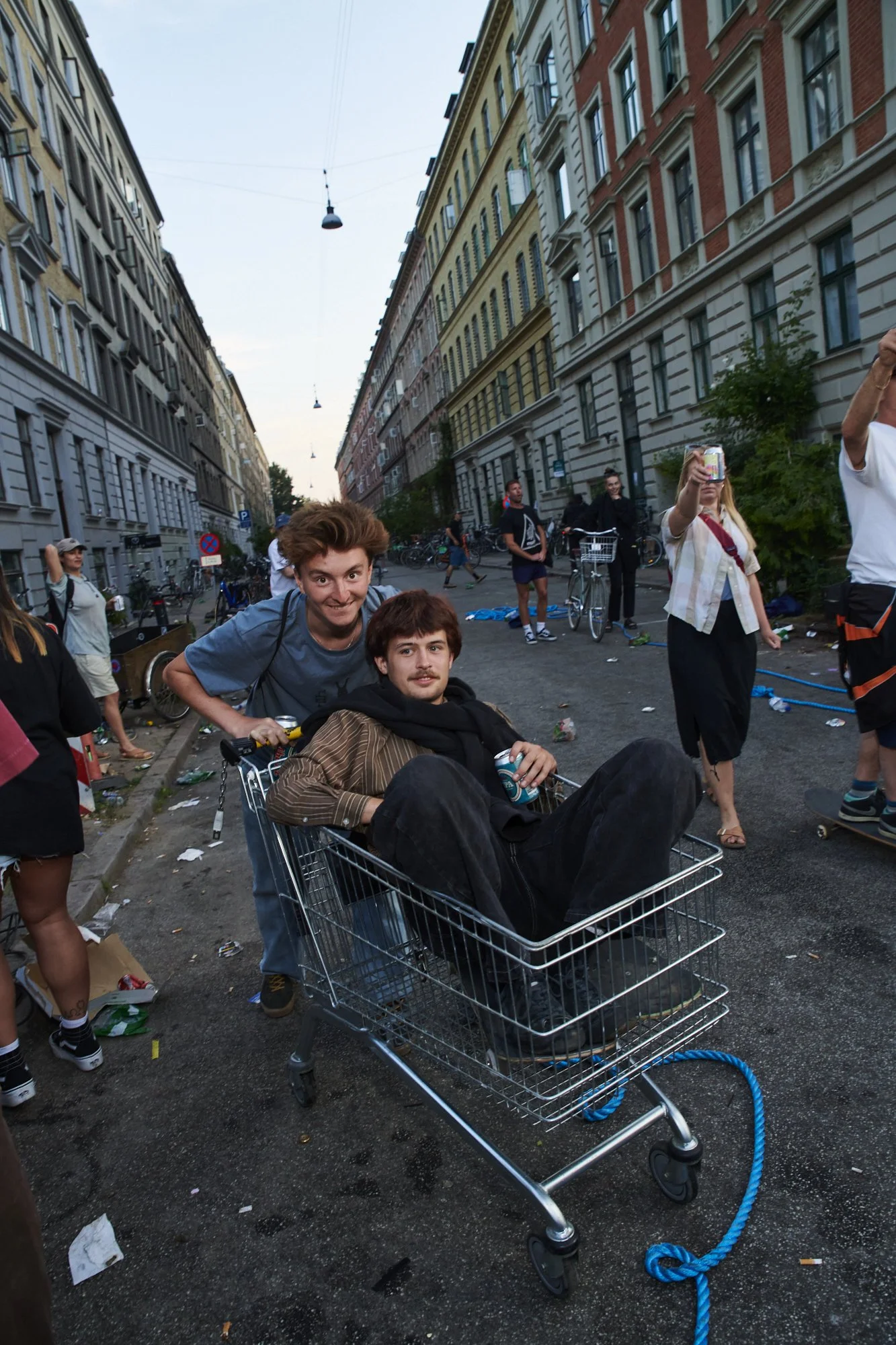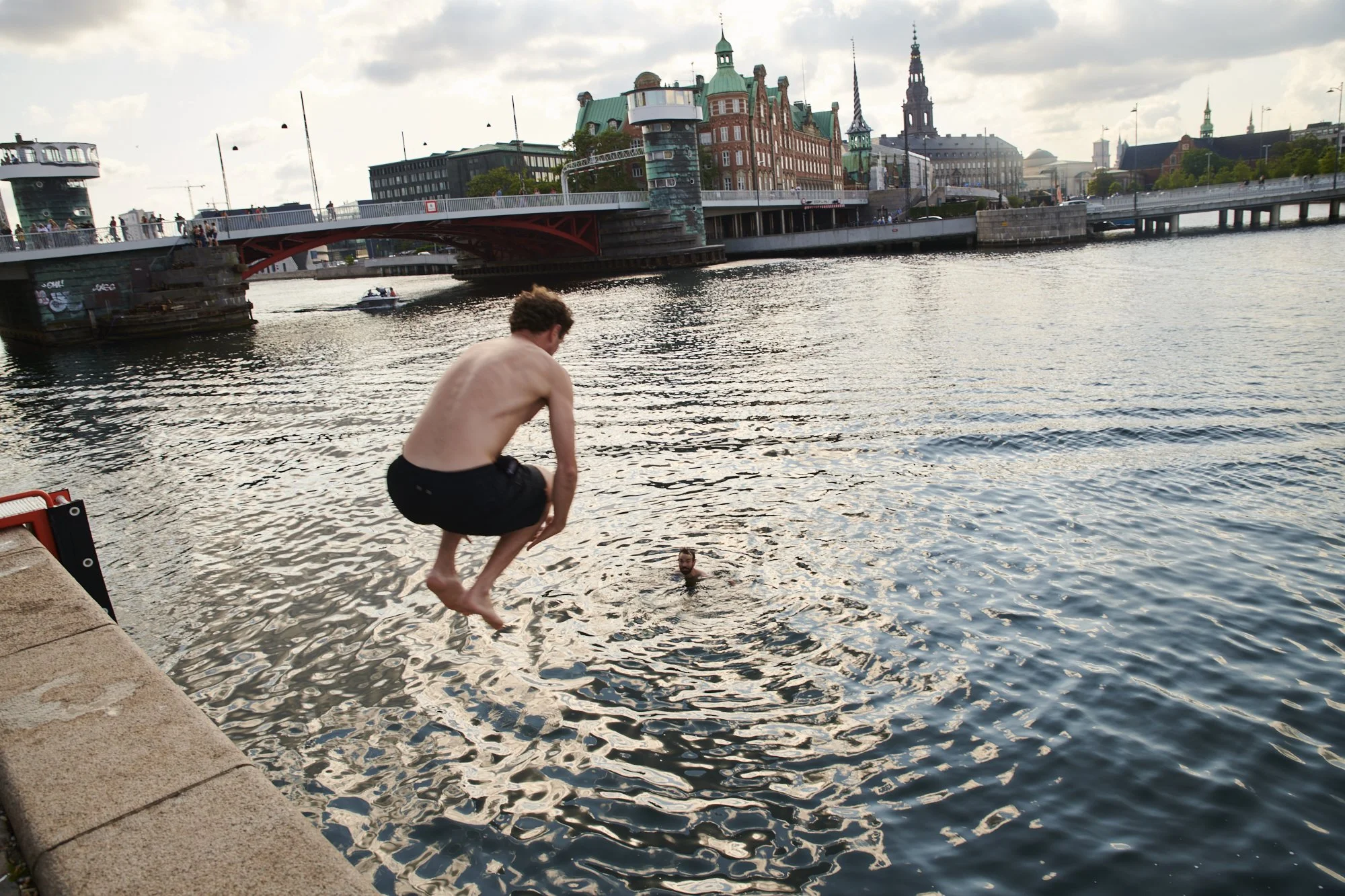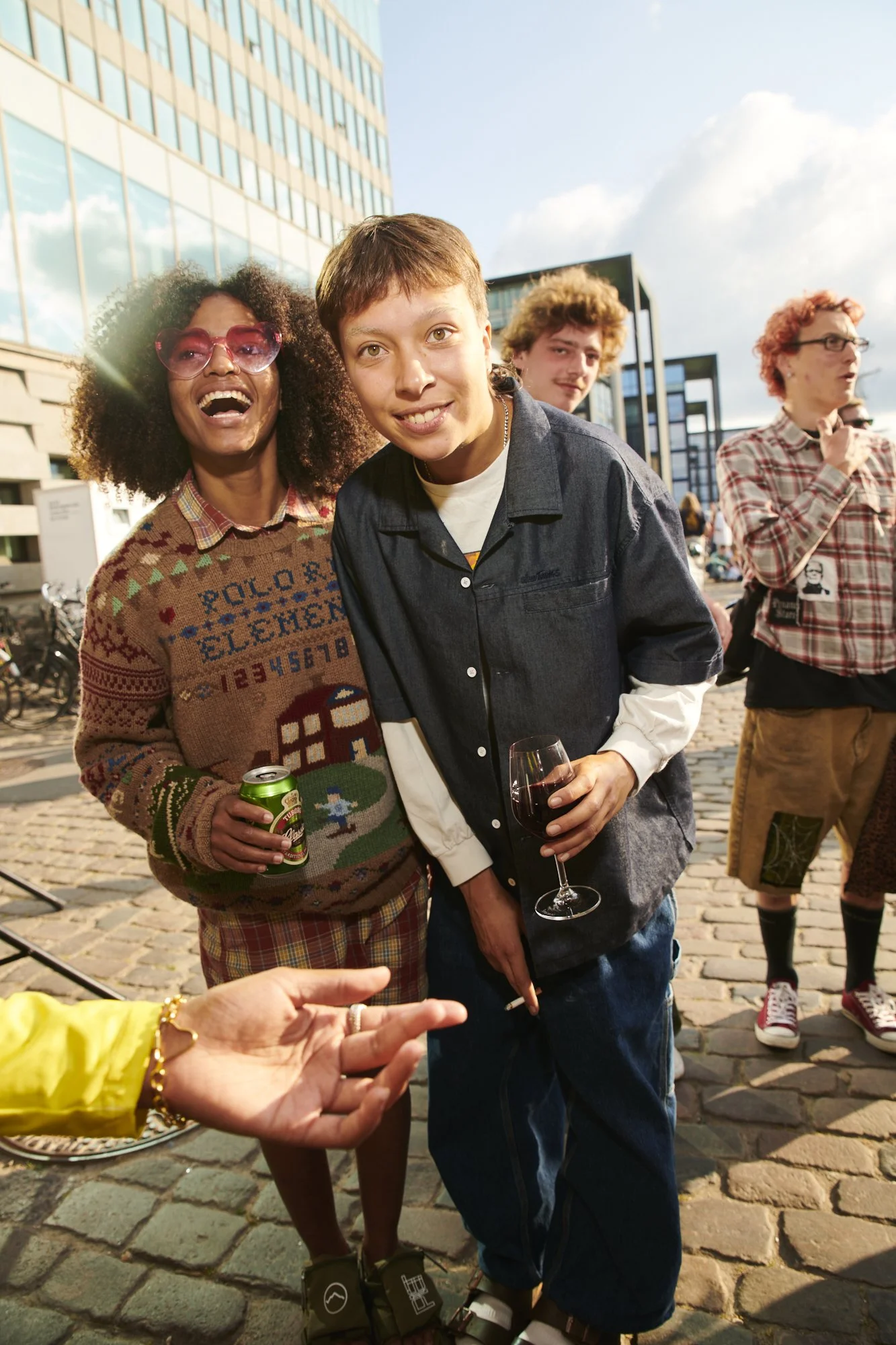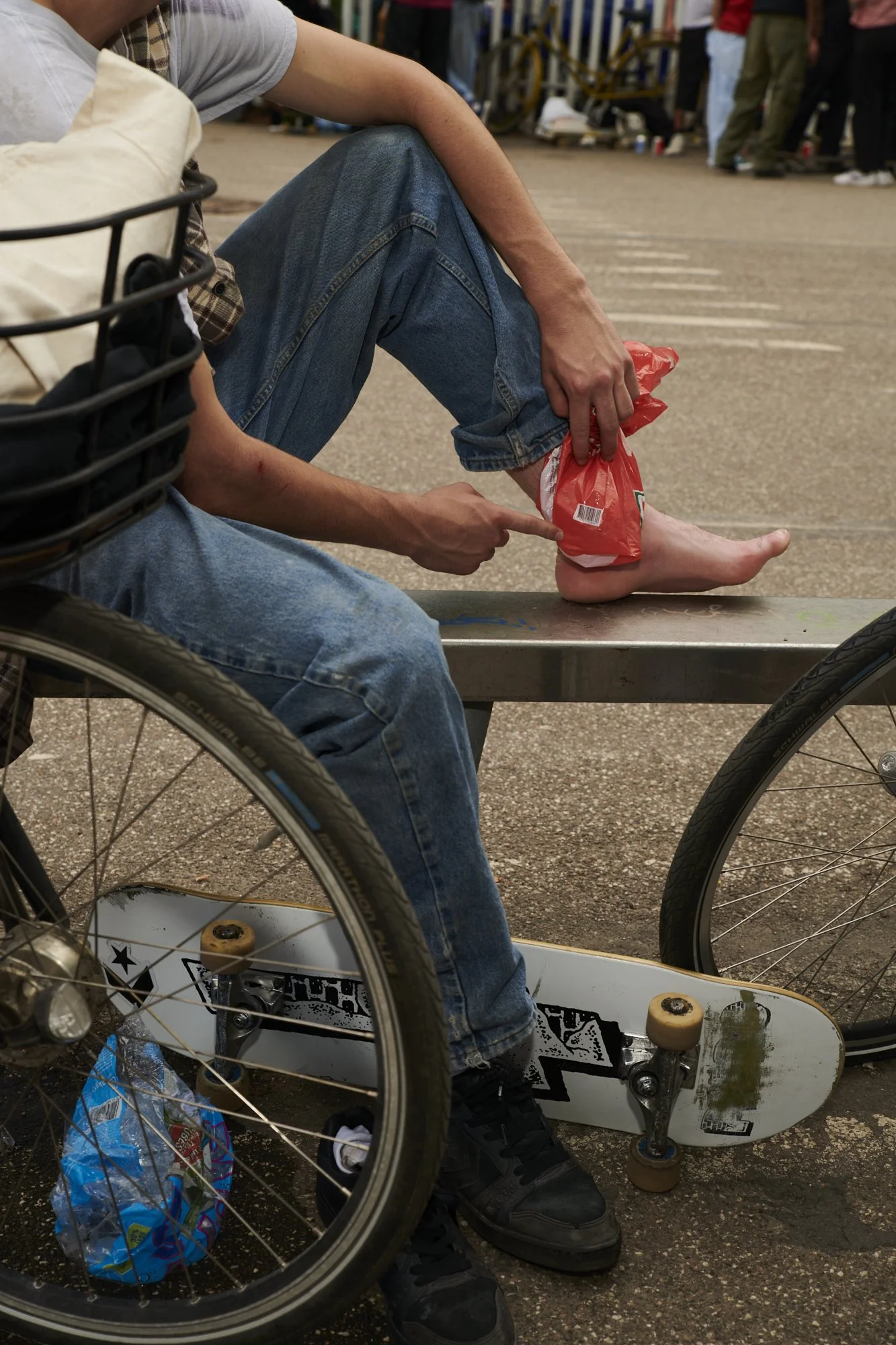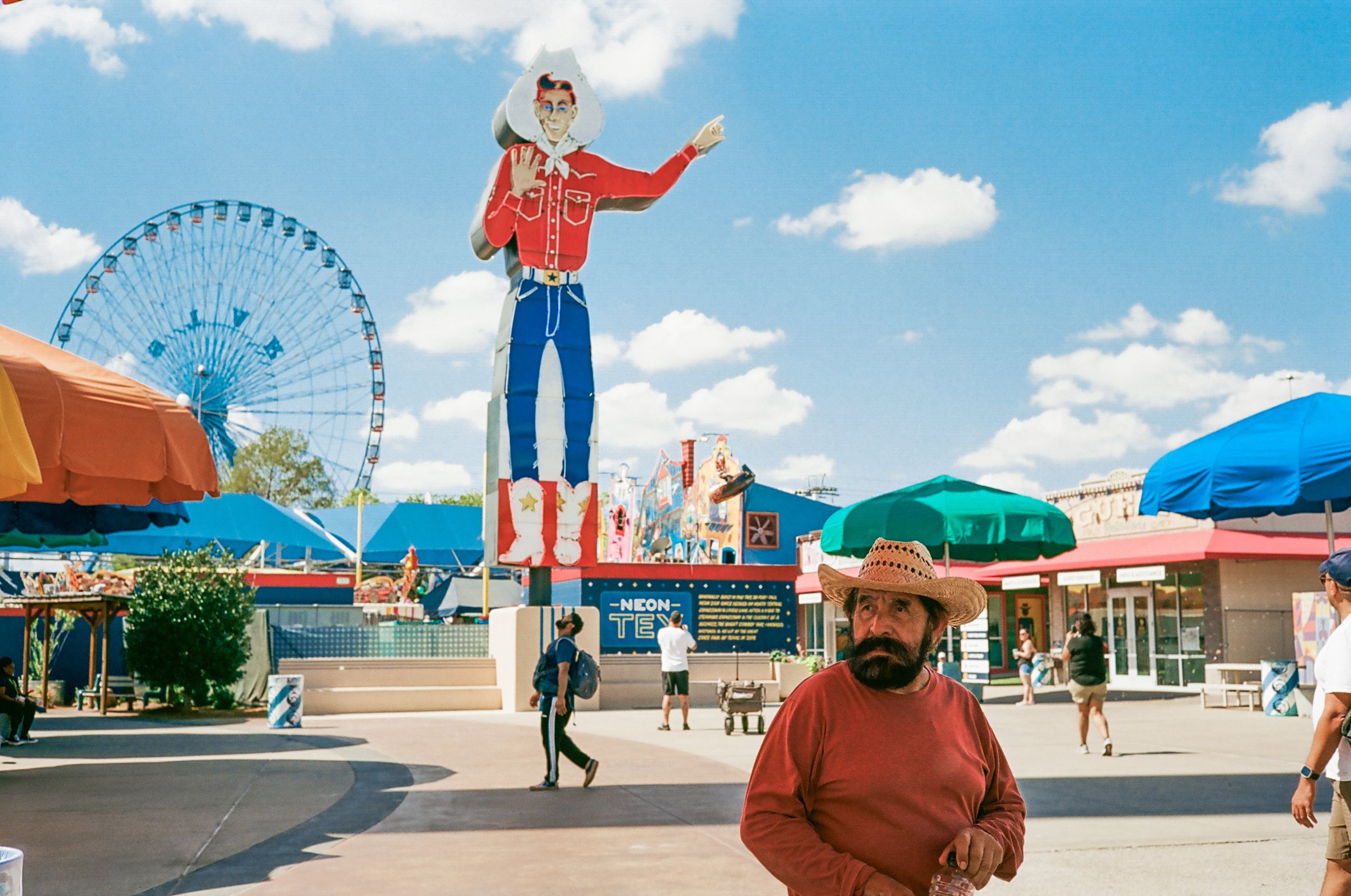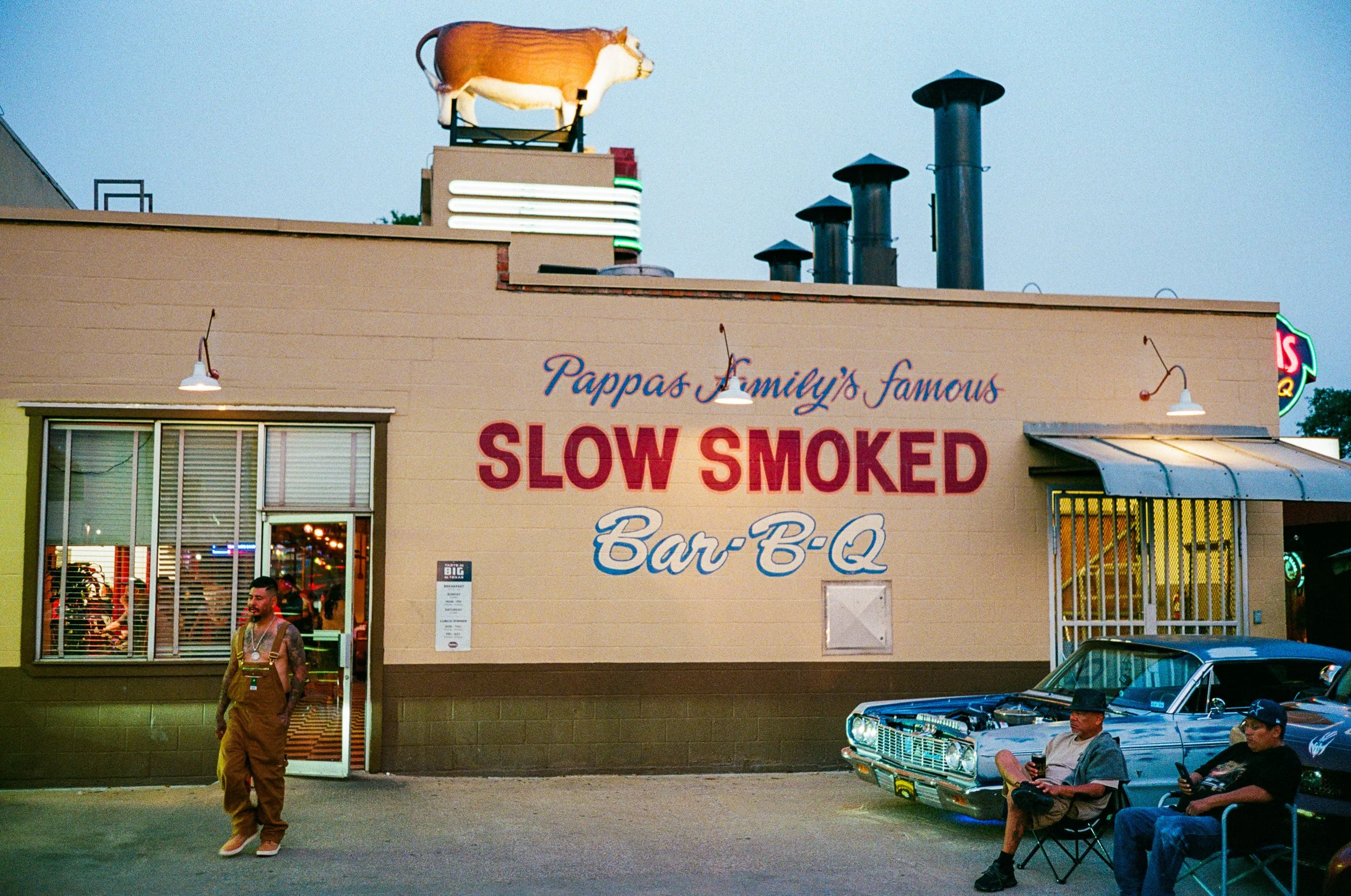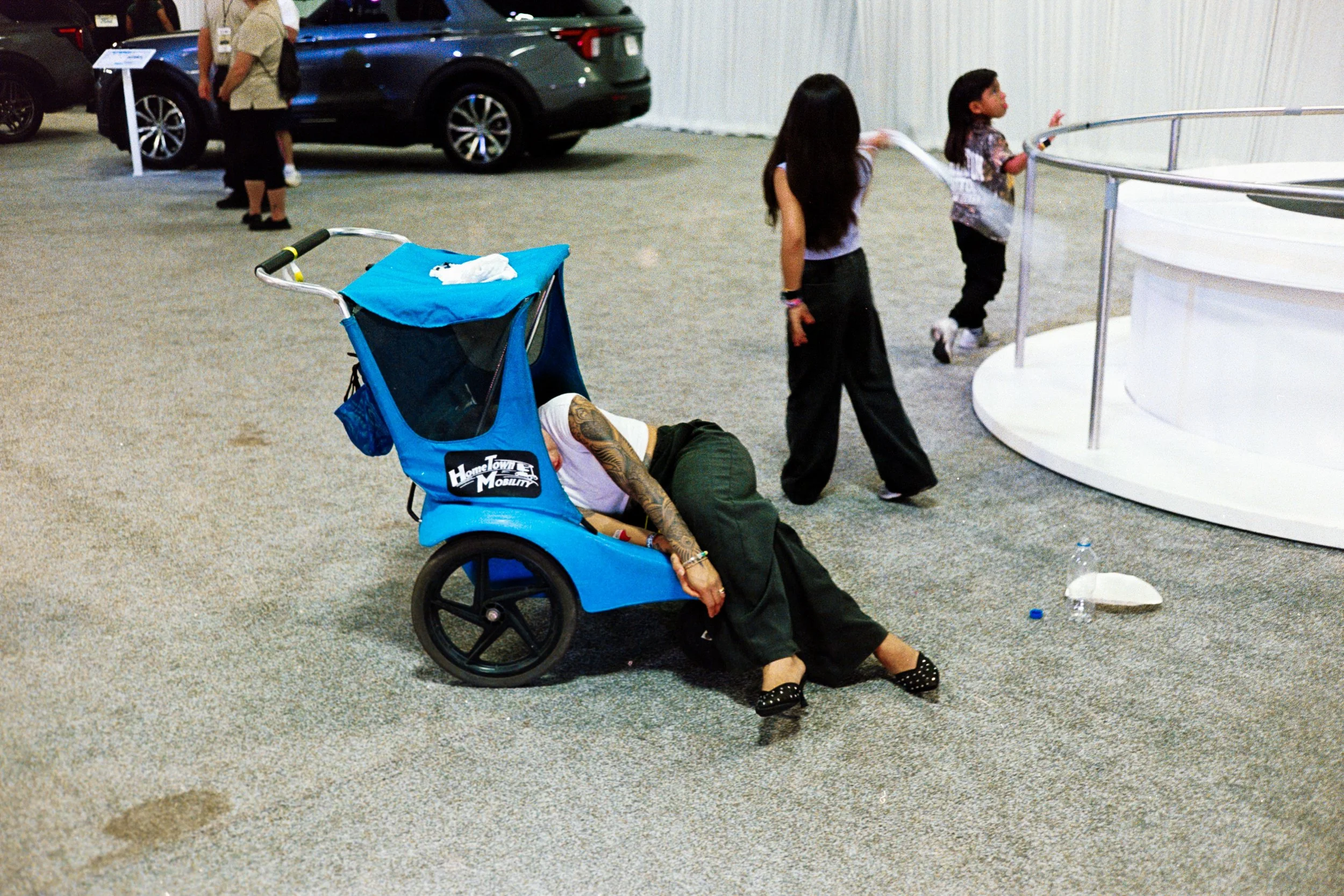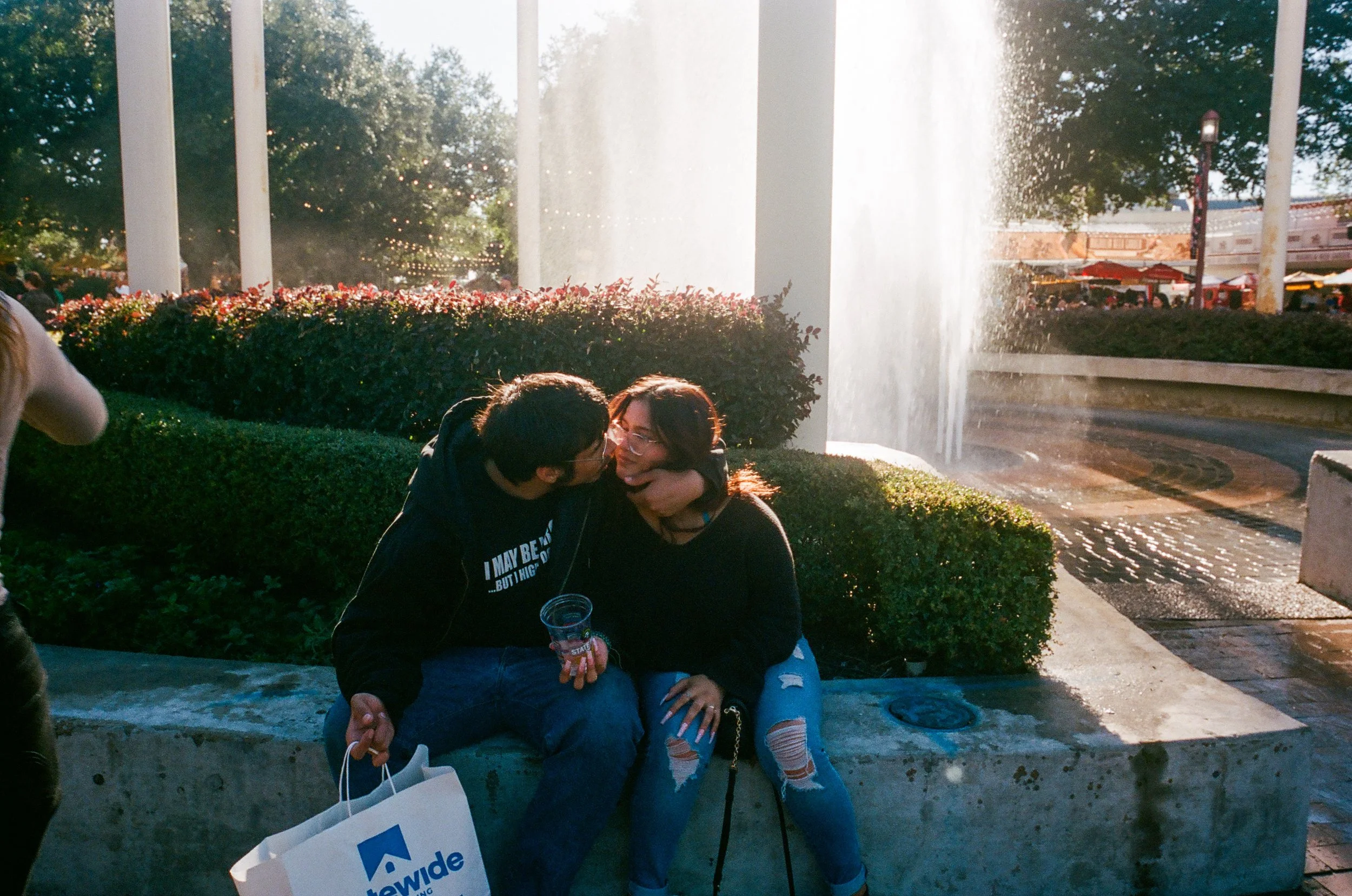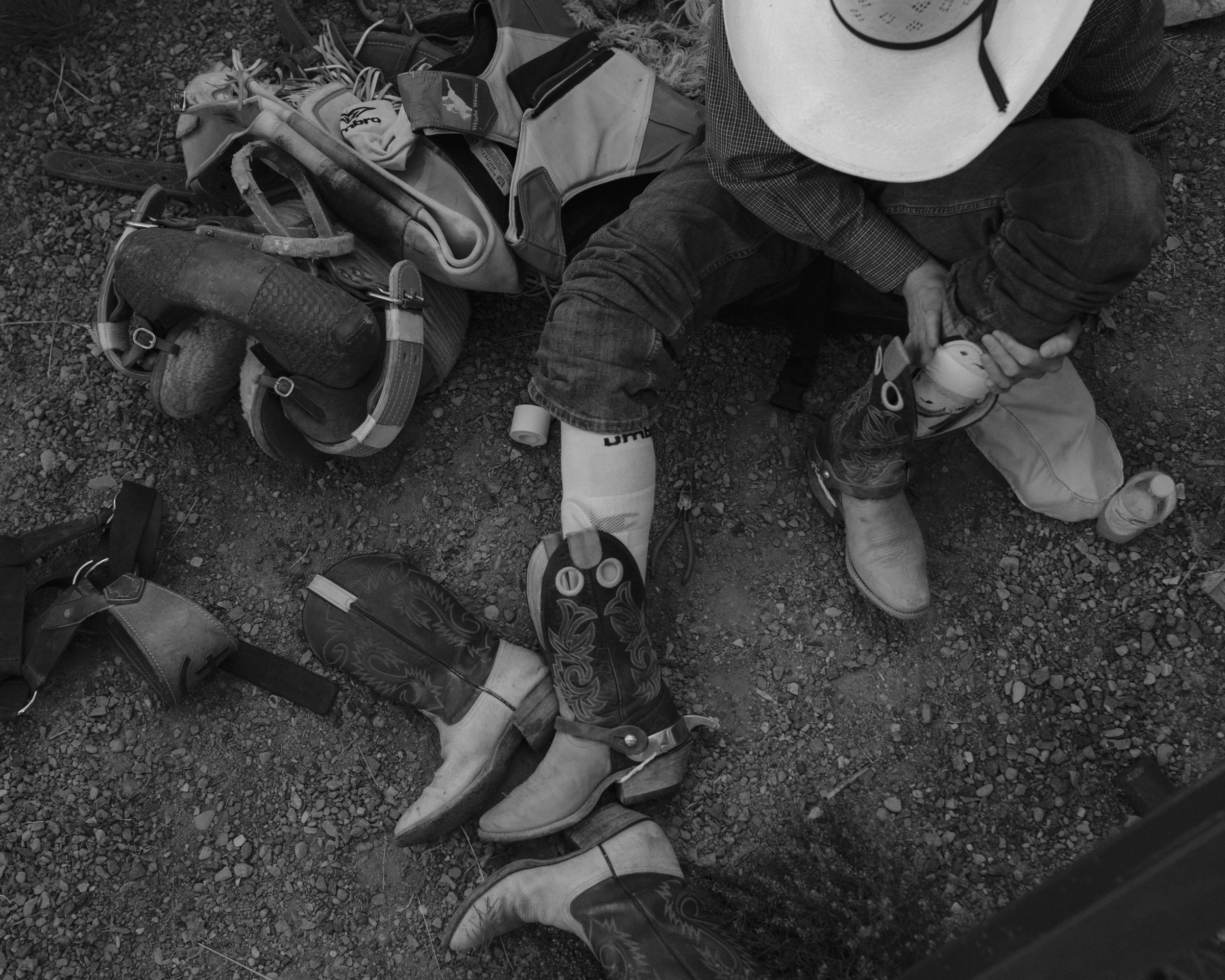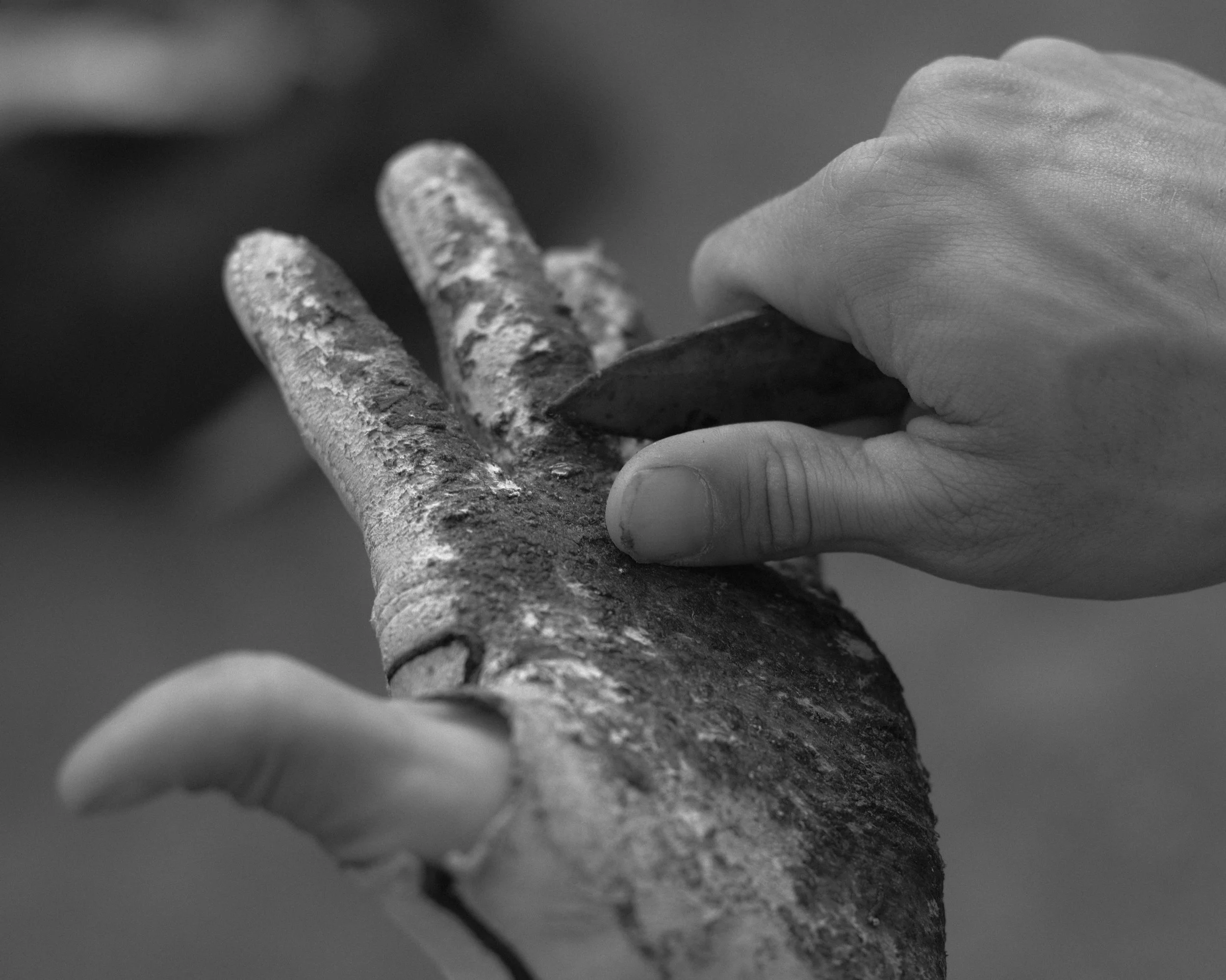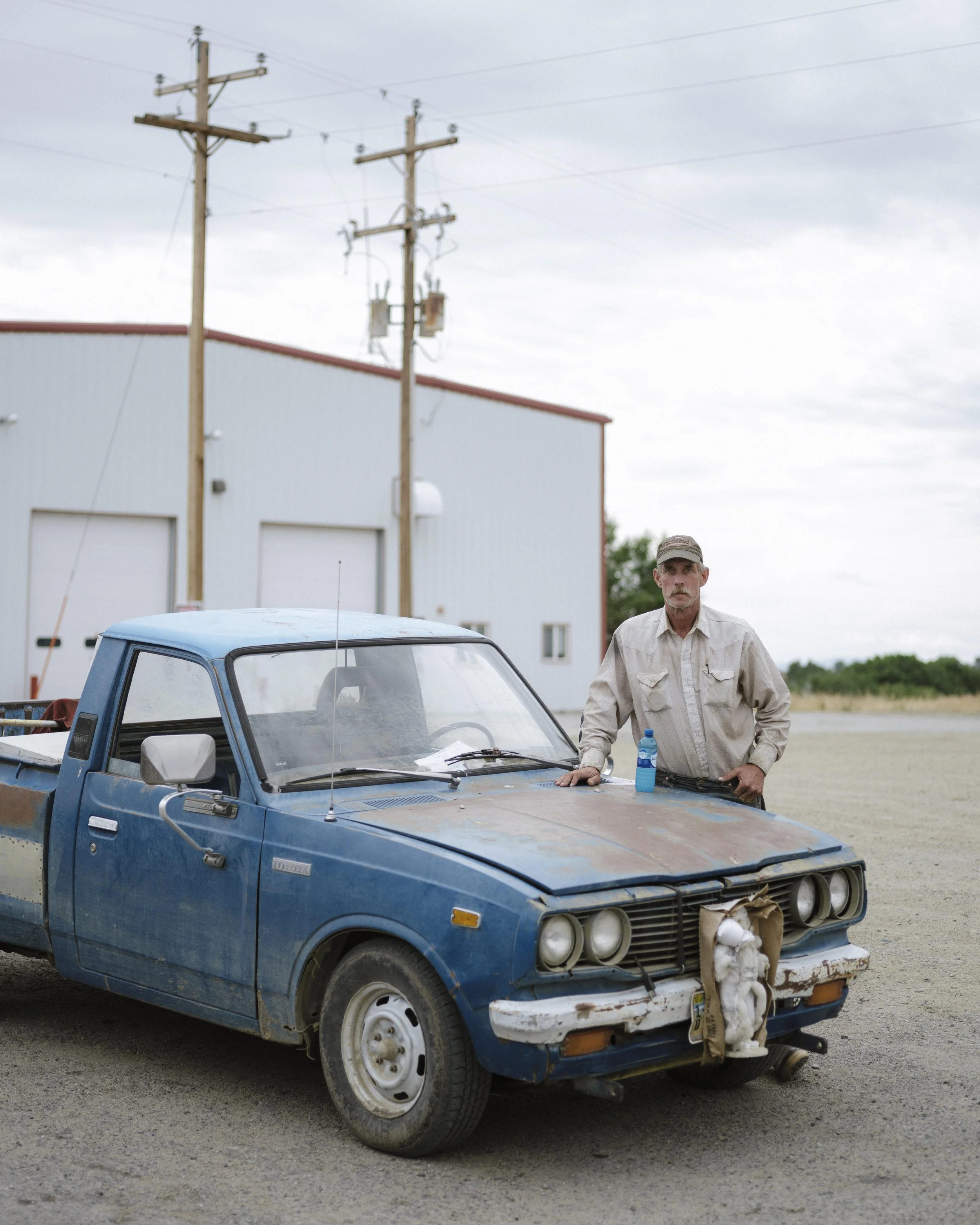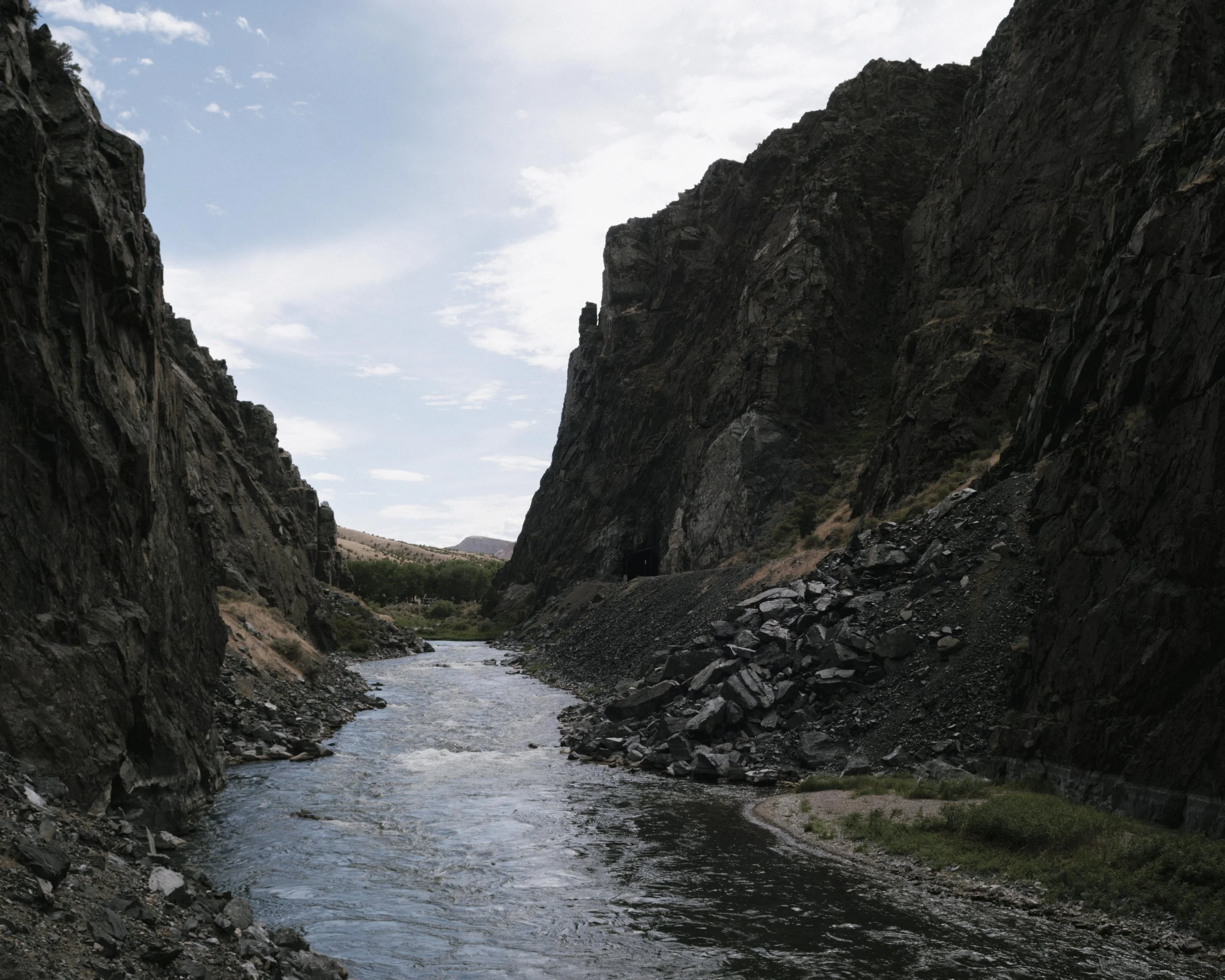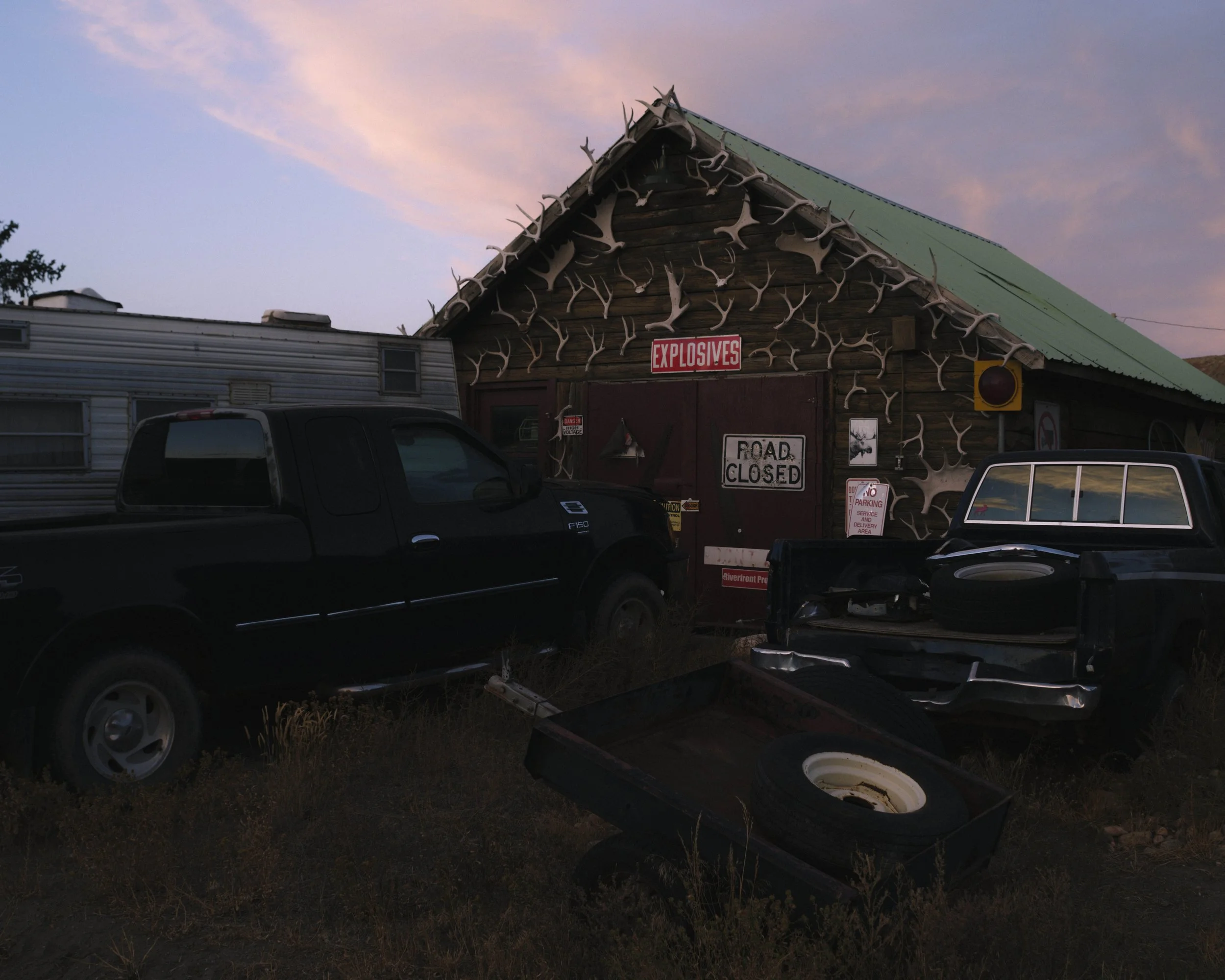CELEBRATION OF LIFE
Low riders at the Dia de Los Muertos parade downtown. Dallas, Texas. / Ryan Orebaugh
WELCOME TO THIS CELEBRATION OF LIFE.
For issue two of Shots Fired we’re grabbing some fireworks, cracking a cold one (or 12), and having a party. “Celebration of Life” is all about the art of joy, the beauty of fun, and photos of people being themselves. Photography for me is all about capturing the emotions of the moment and this issue is focusing on the fairs, festivals, and fanfare that makes life worth living.
CONTENTS
CONTENTS
It’s Party Time - Photographing loud, crowded things as an introvert
Pass the Popcorn - Grab a corndog and step right up, we’re photographing the county fair
Self Reflections - Linnea Bullion on keeping it silly, skateboarding, and the seriousness of self-portraits
Fair Weather - Having fun with pictures in Dallas, Tx by Chandler Hawkins
Behind the Screens: Davis Clem - Getting dirt under our fingers with western photographer Davis Clem
Photo Gallery - A community feature free-for-all, this time it’s all photos of having a blast
It’s Party Time
I’ll be honest, I hate parties. I always have, they’re too loud, I don’t drink, and I’m generally into being in bed by 10pm. Which I guess is ironic that this issue is all about parties and festivals. But all that changes if there’s a camera in my hand. Photography is like a social lubricant for me; it loosens me up, gives me something to focus on, and helps the conversations flow. There’s a rhythm to it, the cadence of wandering and shooting keeps me grounded, searching for the right moments. It’s a meditative flow state of constantly looking; you can’t stop paying attention to what’s around you or you might miss something. The reality of photography is that it’s nothing more than paying attention to what’s going on, and then clicking the shutter. The chase of the unknown is what keeps me coming back for more; documenting people’s happy memories requires braving the crowds, spilled drinks, and sometimes a whole lot more, but it’s all worth it for the shot.
IT’S ABOUT RIDING THE LIGHTNING
Crowds have their own energy, they’ve got peaks and valleys of activity and you’ve got to learn to get a sense for them. The constant repetition of observing starts to give you a 6th sense about where the action will start. It’s like a dance where you’re always trying to be slightly ahead of your partner, except you’re blindfolded and don’t know the song. So at a certain point you just have to give into the music and see where it takes you. So get out there because you rarely hear a good story start with, “so I was sitting on my couch….”
HAVE FUN AND BE YOURSELF.
HAVE FUN AND BE YOURSELF.
Pass the Popcorn
A photo essay on the joys, nostalgia, and comfort of the over-commercialized, whimsy of the Tennessee Valley Fair
To kick off the end of summer and the start of fall, it was time to make my yearly pilgrimage to whatever the closest fair-like-object within 20 miles of me. Fueled by an obsessive compulsion to take photos I braved the $15 parking fees and began exploring the wild world of the East Tennessee Valley fairgrounds.
I don’t know why I love the fair, but there’s just something about seeing cows, corndogs, and a massive Ferris Wheel that makes me smile.
Fairs are the great equalizer, you can see anything from high school first dates, to families showing off their prize rabbits and even a rouge photographer. But what brings everyone together is the love of fried food and overly-neon colored machinery. What’s so interesting to me about documenting these things is that every one has their own local flavor. There’s a pretty standard fair set-up, a Ferris Wheel, a livestock show, a bunch of carnival rides, and corndogs. But the execution is always a little different, in Texas we had a massive animatronic cowboy called “Big Tex” that welcomed everyone with a robotic East Texas twang. Here is Tennessee, we have ears of corn with agriculture facts perfect for photographing your family. A melting pot of culture that reduces into a funky American syrup that might make you sick but tastes like pie eating contests and funnel cake.
Self Reflections
Linnea Bullion on keeping it silly, skateboarding, and the seriousness of self-portraits
When I started working on the concept for this issue, Linnea was the first person I thought of. As a long-time fan of her work I was stoked to be able to sit down with her and pick her brain about how to photograph joy. The consistency of her voice throughout all her work is something I’ve been chasing in my own photos, and being able to see her personality written all over every image she creates is super inspiring. Fun fact, she’s as cool and whimsical as her self-portraits make her look. So strap in and maybe get a puppet because we’re diving into the magical world of Linnea’s photos; clown make-up optional.
Self portrait with puppet Linnea / Linnea Bullion
Self portrait / Linnea Bullion
Self portrait with Keaton / Linnea Bullion
A self-described optimistic nihilist, member of LA’s puppetry guild and reformed natural light photographer Linnea’s journey into photography is far from average. She started with cheap point and shoots as a kid, moved onto to photojournalism through college, before evolving into the pop-art meets puppetry with some Alex Prager mixed in for good measure that she is today.
Self-portraiture came as a natural progression of her artistic practice, as she transitioned into studio work and taught herself lighting. In Linnea’s own words, “To be totally honest, the self-portraits came out of being to nervous to ask people to model. When I was starting I was worried that I would be wasting people’s time by photographing them, but I’m always around and I can’t flake and I actually want to make the weird crazy ideas in my head.”
Self portrait in Milan / Linnea Bullion
“It’s all about bringing joy to myself, and other people through these photos.”
- Linnea Bullion
Bob Baker Day / Linnea Bullion
Linnea is all about bringing the fun; I asked her how she manages to keep her voice throughout her all her work. Her secret, “The tonality is my niche now, the whimsy is my niche. It’s kind of just me, I like to find play and humor in general and I want to find the silliness in everything, I want there to be joy.” Nothing illustrates this better than the puppet-filled world of LA’s Bob Baker Day.
A clown coat at Bob Baker Day / Linnea Bullion
Something Silly / Linnea Bullion
“Bob Baker Day is a celebration of human creativity… Puppet people are the best people. ”
-Linnea Bullion
Bob Baker Day is a place where people can be themselves, wear clown costumes, and just have a good time. Now that she’s “an official puppet person” with her own puppet-Linnea; she’s got a new love for capturing these moments. “Puppetry is viewed as a serious art form in the rest of the world, but in the States the general public sees it as for kids; just frivolity” Linnea explains, “but at Bob Baker Day, it’s taken seriously by people who really appreciate it.”
The Feel-Good Music Train at Bob Baker Day / Linnea Bullion
A scene from Bob Baker Day / Linnea Bullion
Wiz, the clown puppet / Linnea Bullion
But it’s not just puppets and self-portraits; in addition to all her other creative pursuits Linnea manages to shoot skateboarding with the same level of whimsy as neon marionette dolls. Bullion first started shooting skaters and the surrounding subculture studying abroad in college. “We had to pick some sort of project to shoot while we were there [studying abroad] I had noticed that there were a ton of skateboarders around and I just started hanging around skate spots asking to take people’s pictures.” Linnea continues, “…that lead into shooting that world, I’m not a skate photographer. I’m looking at the lifestyle and the anthropological side of skating, I’m presenting skateboarding to non-skateboarders.”
Copenhagen Open Skate Competition / Linnea Bullion
Athens Skate Competition / Linnea Bullion
Copenhagen Open Skate Competition / Linnea Bullion
Copenhagen Open Skate Competition / Linnea Bullion
Copenhagen Open Skate Competition / Linnea Bullion
“I feel best when I’m making things I wanna make, that’s my flow state… Even if nobody is looking at them, I’m happy making them.”
- Linnea Bullion
Copenhagen Open Skate Competition / Linnea Bullion
Copenhagen Open Skate Competition / Linnea Bullion
Copenhagen Open Skate Competition / Linnea Bullion
Check out Linnea’s work here.
Fair Weather
A photo essay on having fun with pictures in Dallas, Tx photos and words by Chandler Hawkins
Dallas isn’t walkable. Street photography on any average day isn’t as easy as taking a photo and walking off. There are hot spots of activity like Bishop Arts, the AT&T Discovery District, or Klyde Warren Park. But in general, everyone is driving to wherever they are going and this place is built for minimal exposure to strangers.
You’re asking for permission or parking to capture someone or something interesting (hoping they’re still there). I operate that way a lot of the time.
Festivals, fairs, or events are one of the only ways you’ll see people densely populated and off their guard. Everyone is too busy enjoying the event that they aren’t concerned with this guy pointing a camera in their direction. If they are, it’s as easy as smiling and saying thank you, or explaining how much I admired the moment, or how awesome I thought they looked, or that I’ll take their number and send them the photo later. I think that’s what makes events here so attractive. You’re more likely to find beautiful people doing beautiful things.
Check out Chandler’s work here.
Behind the Screens:
Davis Clem
Getting dirt under our fingers learning about the ins and outs of photographing the real American West
“Dubois, WY is about 900 people, well 911 according to the sign…” Davis recounts, “and aside from going out to the bar, the rodeo’s the highlight of everyone’s week around here.”
Welcome to cowboy country. Real cowboy country, where the rodeo is not what you see in movies; ranchers, farmers, and good old regular people competing for guts, glory, and to put on a damn good show. Davis Clem has been coming to Dubois for two summers documenting the people who call the Wind River Range Valley home and their national pass-time, the rodeo. For Clem, it’s not just about the bull-riding; it’s about documenting a community that’s so often forgotten, misrepresented, or caricatured; and doing it the right way.
A bull rider / Davis Clem
“If America’s pastime is baseball, the West’s is rodeos.”
- Davis Clem
A typical rodeo in Dubois goes like this according to Davis, “You cough up $20, which is about dinner for two out there. Big ass parking lot. Big ass American flag. The sun is setting to the west of course, they start with the mutton busting which kids under 7 can get away with it. They do a ton of events, kids, women, men, they all compete. Team roping, bronc riding, ranch bronc riding, bull riding… it’s a kick ass rodeo. This is the main event of the week.”
The tools of the trade / Davis Clem
The history of rodeos starts with humble beginnings. Ranch hands challenging each other to see who could ride the longest, break the wildest bronc, or rope a bull the fastest. But as the sport evolved from friendly competitions to ranch versus ranch to eventually the reaching a national stage with the Professional Bull Riding (PBR) circuit, local rodeos still thrive. The culmination of roughly two centuries of competition results in 8 seconds. Riding a bull for 8 seconds is what separates riders from legend. That’s less time than it takes to read this paragraph, but an eternity in the saddle.
For Dubois, the rodeo is one of the cornerstones of the community. Situated on the Highway 26, the only highway to connect Jackson and Lander, Dubois’ rodeo draws crowds of travelers from all over the state of Wyoming.
The Aftermath / Davis Clem
A rider scrapes the dried rosin off his glove before applying fresh in preparation for his next ride / Davis Clem
Ryan Orebaugh: Ok so how did you get out west to Wyoming?
Davis Clem: Originally I was planning on taking a gap year and applying to graduate MFA programs for photography, so I was just looking for a filler. I reached out to some family friends who have property out in Wyoming… I asked if I could fix their fences literally for the summer and just be hands on their property. They said, ‘no we just don’t have enough work for you’. They kind of believed in me a little more and so they connected me with a photographer in Wyoming… it kind of boiled down to I knew someone who knew someone, who knew someone. I missed my graduation ceremony, I didn’t receive my diploma because I was driving 3 days from Savannah, GA to Wyoming. So that’s I got introduced to the ranch. It’s a dude ranch so guests come to the ranch for a week to ride horses, go fishing, and I ride around the follow them and capture that week for them. It’s really special for them and special for me too… so that’s like my job in Wyoming.
RO: How’d you get started photographing the rodeo?
DC: Dubois has a frickin’ sweet rodeo. It’s along highway 26 which is the only road that connects Lander to Jackson unless you wanna take a 7 hour detour. My ranch is 15 minutes away from the fairgrounds so we’d go almost every Friday. Last year I went to every rodeo except one. I knew I wanted to photograph the rodeo just out of interest of photographing the rodeo. But I didn’t expect what happened. I was taking pictures along the rail and I looked into the pit where they release the broncs and the bulls and I saw another dude with a camera… he was a local photojournalist who he had a bit of a rapport in the area but I was a totally new face. I was pretty nervous walking into the pit full of a bunch of cowboys just spittin dip on the ground and smoking cigarettes… that first rodeo I just stayed in the [main] area but the second rodeo I walked into the pit and literally just started shaking hands and just introduced myself. I really wasn’t taking pictures I just wanted to get comfortable with the people because I know that process of immersing yourself in a new environment. I wanted to show respect to the subject matter and let them know that they’re not just subjects they’re people too. That’s really important when you’re experiencing a new culture through a lens.
“I wanted to honor their sport and passion by photographing the most minuscule process.”
- Davis Clem
Pre-ride nutrition / Davis Clem
A bronc rider after a ride / Davis Clem
RO: Talk to me a little about Dubois, what’s it like?
DC: What struck me at the start was the sheer expanse of land. We’re surrounded by so much history whether it’s geological, or westward expansion, or western/indigenous culture. This is the main water source for the indigenous tribes, it was the first reservation for the tribes in the area; the Shoshone, Arapaho, and the Sheep Eaters. There’s a lot of cattle ranches around… we’re surrounded by the Wind River Range, the Absorka Range, which feeds into the Yellowstone wilderness and the Tetons, and Bighorn. So there’s a ton of outdoor rec, and tons of avenues for business.
RO: How do you approach photographing the rodeo/the riders?
DC: My whole life, I’ve taken pictures, and shared pictures. I understand how important or how special it is to share a photo with someone, an these dudes were super open to the idea of my pictures. I had a different approach than a photojournalist; I didn’t have a tight telephoto lens, I wasn’t initially shooting for the action, I just wanted the process and the portraits. I saw the project in black and white, because it got dark really fast so B&W really lends to a little larger threshold of light. But also, contemporary colors around rodeos I think are appalling, it’s just a lot of neon and it’s just really distracting when someone in a bright pink shirt is in the background and you’re trying to compose a portrait. Also there’s a nod to historical context in black and white. Rodeos are a heritage sport in the west, it’s super sweet to see this tradition carried out with so much pride out in the west. Pop culture really ran with the glamorized cowboy but local really embrace the legacy of what it means to be a cowboy. Historically, cowboys were cattle pushers, the broke horses, they f*ckin’ slept under the stars… these men worked their asses off. I was fascinated by the microprocesses of these riders taking a lighter to their gloves to heat up new rosin and apply it, or doing their stretches to loosen up and anticipate the bull. It was super cool to be in that new environment, and to be welcomed into it. By the third or fourth rodeo… I met their girlfriends, I met their dads, I shared Coors Light with them we were buddies. These turned into friends pretty quickly and it was really awesome how fast they embraced me.
The Little Wind River / Davis Clem
Jared shooting clays in the badlands / Davis Clem
RO: So how did you get involved with photographing the surrounding Wind River Range?
DC: So from my ranch, the CM ranch; you can see three different geologically formed mountain ranges from one spot. If you look behind you on the ranch and you look south you can see the Wind River Range which was formed tectonically. You look north and to the Badlands which was formed glacially, and then you look west towards the Absorkas which were formed volcanically. Honestly that’s where my project idea started just to photograph the geologically diversity of the area… I pinpointed it to the Wind River [and] I had an idea it would be a cultural survey as well as landscape. I didn’t really know what direction I could take it until one day I was driving on a public access road in the Badlands and I heard gunfire. I crest the hill and I just see a truck parked facing the sprawling rolling hills of the Badlands and the Ram’s Horn which the most prominent peak of the Absorka Range. They’re just shooting trap out of the back of the truck, and we’re on public access land so you can really do whatever you want within regulation limits; but this is the first time I’d ever experienced it. I pulled over and was like, ‘yo what’re you doing… can I take your picture?’ They were so open and so nice and so I took their portraits and then Jared he handed me headphones, and ‘I was like what’re these for?’ and he said, ‘to shoot”. The shotgun they were shoot was a WW1 trench gun, and [Jared] he handed me it to me and said, ‘this is what won us the war.’… Seeing that picture of Jared showed that, ‘this could be really interesting’ and it gave me the confidence to keep photographing locals.
Matt and his truck in Kinnear, WY / Davis Clem
What stuck with me most about talking to Davis about his time photographing life in Wyoming is how much he cares about the community. He’s not just doing it for his portfolio, he’s done the research, made the connections, and genuinely lives the life he’s so passionate about documenting. Davis’ work is a testament to what happens when you take photos for the love of documenting humanity and being curious about the world around you, and don’t mind getting your hands dirty to do it.
Wind River Canyon / Davis Clem
Dubois Residence / Davis Clem
Check out Davis’ work here.
THE GALLERY
Photos of people having fun; submit your work for the chance to be featured in the next issue!
